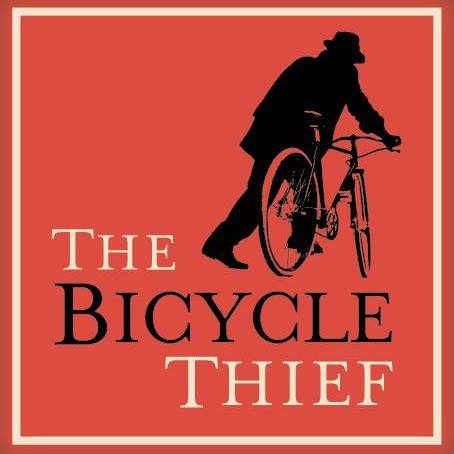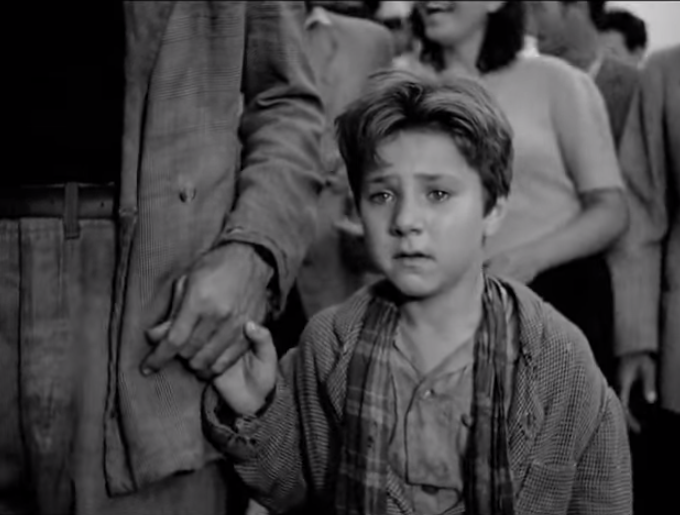

Ricci tells the employment officer, "I'll have one.but not right now. He finally is offered a job putting up posters around the city but there is just one problem.he needs a bicycle to do it. Antonio Ricci has a wife and two children to support and like everyone else is desperate in finding work. They all are struggling to find work and Antonio Ricci is called out among everyone else.

The opening of the film shows all the unemployed in the post WWII economy of Italy crowding around the employment office in Valmelaina.

It's simple themes touches on so many universal issues of the human condition, portraying humans as genuinely flawed people who are vulnerable and when put under strenuous circumstances, will break down and do what is necessary to survive. French Andre Bazin described The Bicycle Thieves best by saying, “No more actors, no more story, no more sets, which is to say in the perfect aesthetic illusion of reality.there is no more cinema.” The Bicycle Thieves has become a cultural icon of art film-making and is now looked at as one of the greatest films in the world, usually ranked next to such acclaimed films as Sergei Eisenstein's Battleship Potemkin, Orson Welles Citizen Kane, Yasujiro Ozu's Tokyo Story, Alfred Hitchcock's Vertigo, and Jean Renoirs The Rules of the Game. The story of The Bicycle Thieves can also be viewed as a social and political commentary on the poverty of Postwar Italy during the late 1940’s, as you see survivors after a devastating war trying to rebuild, start over and live once again. The urban city and streets of Rome and the poverty of its surroundings are in many ways a third lead character within the context of the story and the bleak urban images sheds a powerful understanding of its place and time within history. The film contains striking images of the city of Rome that the characters of Ricci and Bruno inhabit when searching for their bicycle. The bicycle in the story can be looked at as a justification to describe the lives of all the struggling working class people in Post World War II Italy. It is a job hanging up posters (a poster of Rita Hayworth provides an ironic contrast to the glamorous world of Hollywood and the gritty everyday world of neorealism) for which having a bicycle is an important necessity. But soon enough his bicycle is stolen and he and his son Bruno walk the streets of Rome, in search for it. The main character of Ricci, is an unemployed man in the depressed post-WWII economy of Italy, who at last gets a good job which can support his family. After decades of Hollywood gloss, real people instead of actors were startling to audiences.

THE BICYCLE THIEF PROFESSIONAL
It was also a style which casted non professional actors because it brought a sense of reality to the characters, where the acting seemed more natural and real. The aesthetics of Neorealism included films that were mostly shot on a very low-budget and on real locations not using any stages or props. Italian Neorealism was a revolutionary breakthrough, not just for its technical style and raw film-making, but for the gritty realism of its story and poignant naturalism of its characters. Neorealism, as a term, can mean several things it often refers to films of working class life and of the struggles and social conditions of people set in the culture of poverty. Vittorio De Sica was the director of The Bicycle Thieves and his films and the style he used started the Italian Neorealist movement alongside Roberto Rossellini's Rome: Open City, which attempted to give a new degree of realism to the cinema. Sometimes the simplest stories are the most important to tell, because they are the ones people can most identify with, which can create an emotional template of personal honesty and truth. The Bicycle Thieves (or The Bicycle Thief) is a story of humanity and love that has touched so many people around the world because of its powerful simplicities.


 0 kommentar(er)
0 kommentar(er)
